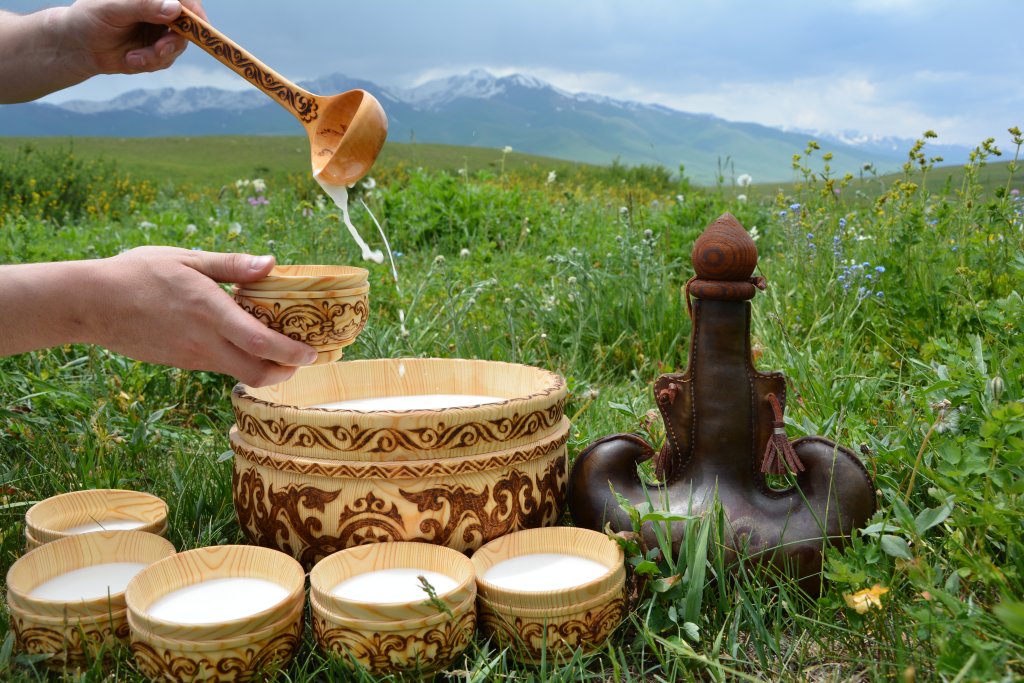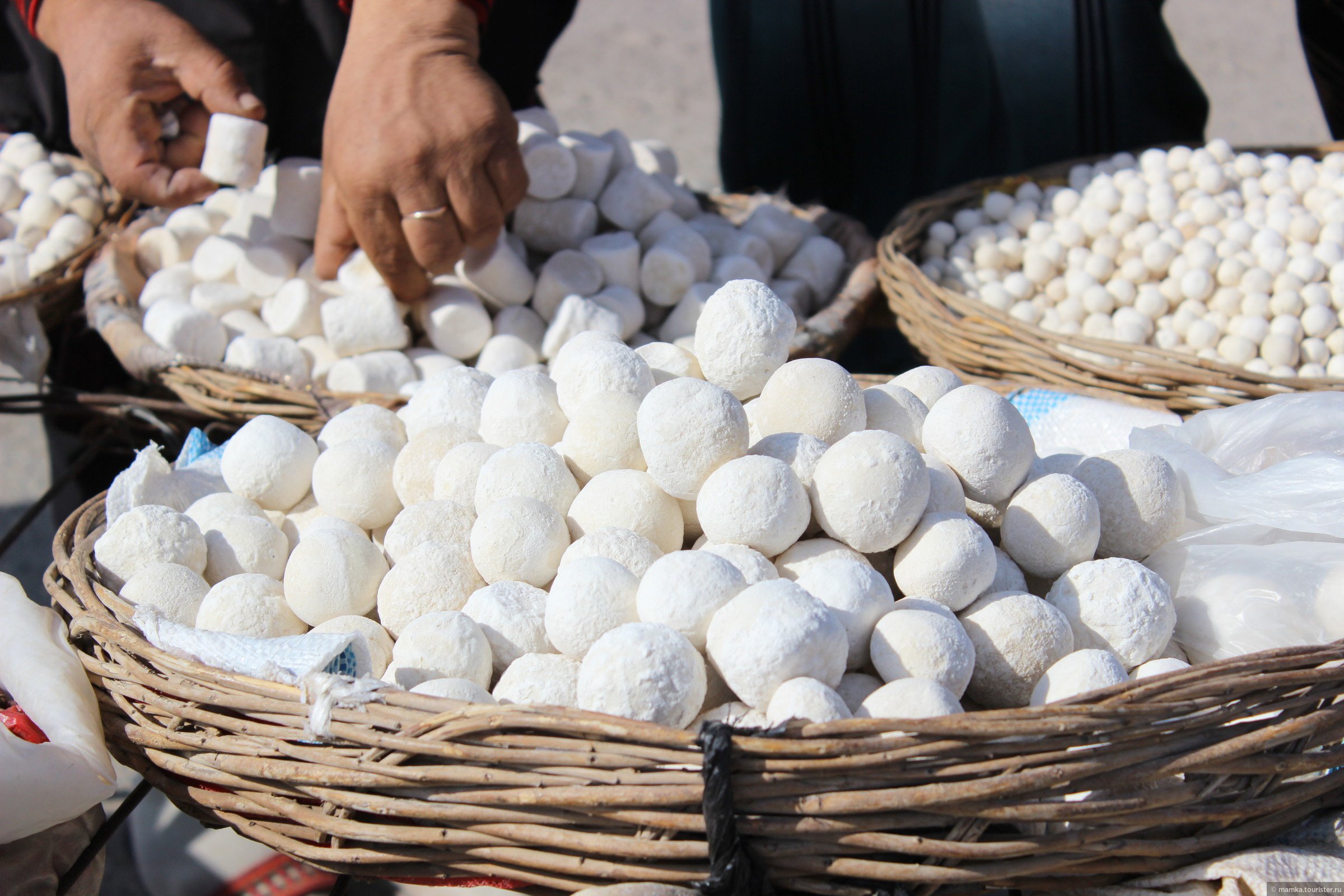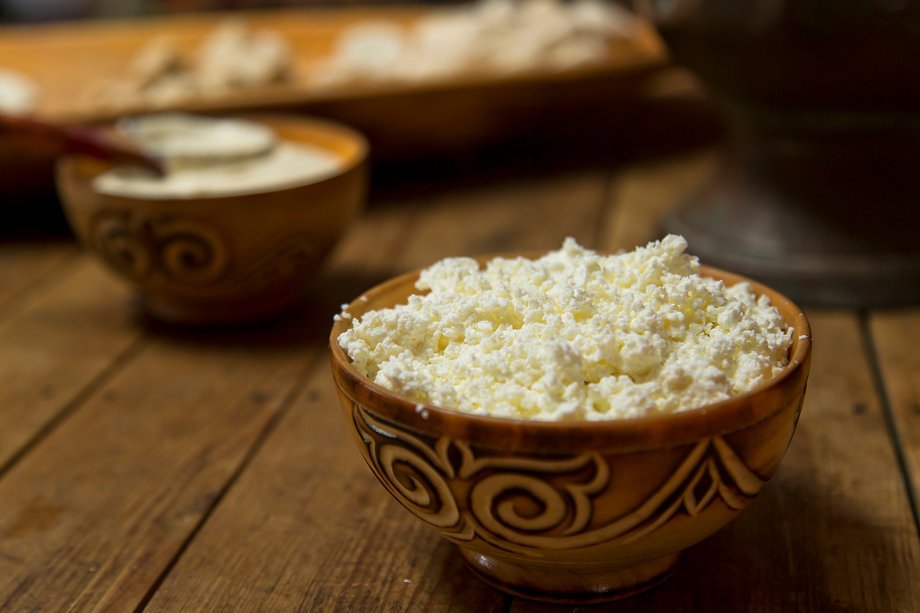ASTANA — Tangy, rich, and full of history, fermented dairy products have been a dietary cornerstone across civilizations for centuries. In Central Asia, traditional foods such as kurt, kymyz, shubat, and irimshik represent a cultural legacy passed down through generations. These time-honored staples remain widely enjoyed and valued for their unique taste and health benefits.

Fermented dairy products contain probiotics like lacto- and bifidobacteria, which help improve digestion and nutrient absorption. Photo credit: mediabrest.by
“Fermented dairy products contain probiotics like lacto- and bifidobacteria, which help improve digestion and nutrient absorption. They also offer enzymes, animal protein that’s easier to digest than plant-based protein, and vitamins from milk — a naturally nutrient-rich base,” dietician-nutritionist Diyara Antayeva told The Astana Times.
However, high in fat, salt and calories, these products can cause discomfort in individuals with lactose intolerance or gastrointestinal issues such as gastritis or acid reflux.
“Moderation is key — it is not for everyday use. Drinking a small glass 3–5 times a week is enough,” said Antayeva.
She noted a natural shift in digestion that comes with age.
“As we grow older, our bodies produce less lactase — the enzyme that breaks down lactose — because we stop consuming mother’s milk. That’s why adults often experience digestive issues with dairy.”
Kymyz: a traditional elixir from fermented mare’s milk

Diyara Antayeva, the dietician-nutritionist. Photo credit: Antayeva’s personal archives
Made from mare’s milk, kymyz is a lightly alcoholic, fizzy beverage with a sharp tang and deep cultural roots across the Eurasian steppes.
Kymyz is naturally rich in beneficial bacteria and yeast that support gut health. Its mild alcohol content — a byproduct of fermentation — also acts as a preservative. Due to its high probiotic levels, it may boost the immune system and improve digestion.
However, Antayeva noted that its alcohol content makes it unsuitable for children, pregnant or breastfeeding women, and individuals with liver, kidney, or gastrointestinal conditions. Its high acidity may also aggravate symptoms of gastritis or ulcers.
At a scientific conference in Astana, held as part of the Fifth World Nomad Games on Sept. 11, 2024, Natalya Egorova, the director of the Research Institute for Study of Bashkort Aty Bashkir Breed Horses in Ufa, Russia, highlighted the historical use of kymyz in tuberculosis treatment. In early 20th-century sanatoriums in Bashkortostan, thousands of patients were treated with kymyz, benefiting from its high nutrient and antibiotic content.
“Back then, they realized that kymyz exceeds cow milk in nutrient and antibiotic content by four to six times. And all nutrients of kymyz are assimilated by 95%. Remarkable results were achieved in treating early-stage tuberculosis, along with positive effects on digestion, blood formation, and the central nervous system,” said Egorova.
“During the fermentation process to make kymyz, 18 amino acids are present, including essential ones like tyrosine, tryptophan, and phenylalanine, which are absent in fresh mare’s milk. These protein components determine the immunologic effect of kymyz,” she added.
Shubat: a tangy, nutrient-rich camel milk
Shubat, a fermented drink made from camel’s milk, is treasured in Kazakhstan and neighboring regions for its flavor and health profile.
With its slightly sour taste and creamy texture, shubat contains a nutritional mix: vitamins C and B, iron, calcium and healthy fats. Like other fermented dairy products, it also has probiotics and minerals that support bone strength and immune health.
Shubat’s rich blend of potassium and magnesium helps regulate blood pressure and heart function. At the same time, its high vitamin D and phosphorus content supports bone density and helps prevent conditions like rickets and osteoporosis.
“All animal products retain sodium. So, people with high blood pressure should limit their intake of dairy products — especially fermented ones, which tend to be high in sodium,” added Antayeva.
Despite its nutritional value, shubat also has a very short shelf life. Even when stored at proper temperatures, it lasts only about five days, making it difficult to export and relatively rare on store shelves. If not refrigerated, it turns sour within a day.
Kurt: a protein-packed nomadic snack
Kurt is Central Asia’s answer to portable, preserved nutrition — bite-sized balls of dried yogurt that fueled generations of nomads.
Derived from the Turkic word “kuru” (dry), kurt is made by straining and drying sour milk or yogurt, forming dense, salty chunks with impressive shelf stability. It can be made from cow’s, sheep’s, or goat’s milk.

Derived from the Turkic word “kuru” (dry), kurt is made by straining and drying sour milk or yogurt, forming dense, salty chunks with impressive shelf stability. Photo credit: food.pibig.info
Historically, over 20 varieties of kurt existed, each boasting unique blends of milk proteins, enzymes, vitamins and minerals. Rich in protein and calcium, kurt also offers probiotic benefits.
However, its high salt content may pose risks for individuals with hypertension or kidney conditions, so it is best to consume kurt occasionally and in small portions.
Irimshik: a delicate cottage cheese treat
Irimshik is another traditional dried dairy product with a soft texture and subtle sweetness.

Ak (white) irimshik, made fresh with butter and meant to be consumed quickly. Photo credit: osken-onir.kz
This treat is made by curdling and drying milk into cottage cheese. There are two main varieties: ak (white) irimshik, made fresh with butter and meant to be consumed quickly, and kyzyl (red) irimshik, cooked longer and sun-dried for long-term storage.
Irimshik is rich in zinc — vital for bone and cartilage formation — and vitamin A, which supports vision and immune function.
Tradition in a modern context
Centuries ago, fermented dairy products were well-suited to the energy demands of Kazakh nomads. In contrast, modern urban lifestyles call for more mindful consumption.
“Back then, people were more active — Kazakhs led nomadic lives, moved a lot, needed high-calorie foods. Now most of us live in cities with sedentary jobs, so our need for such heavy foods has decreased,” said Antayeva.
Still, these time-honored foods have their place. Drinks like airan — a salty yogurt-based beverage — can help replenish electrolytes and aid post-exercise recovery due to their protein, salt and carbohydrates blend.
One growing trend, Antayeva noted, is the preference for homemade dairy, which some consider more organic or authentic.


